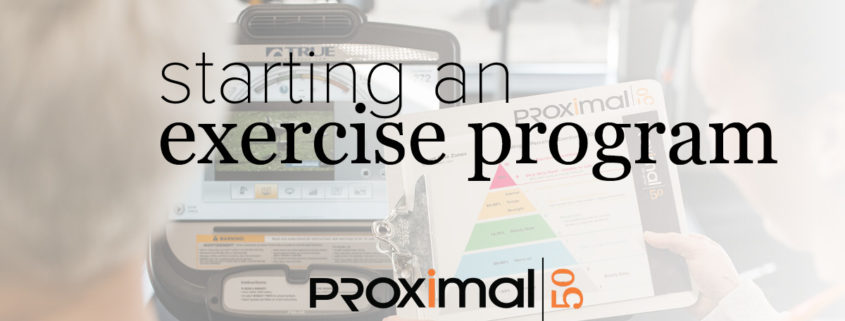How to start a workout routine for the New Year!
So You Wanna Start Working Out… now what? Or You’re Ready for the Next Level… what does that mean?
For a lot of people, the New Year symbolizes a new beginning. A new beginning to a fitness journey, eating habits, being more financially savvy, or just better self-care in general. I am here to give a little bit of guidance when it comes to fitness.
First of all, let’s assess the situation. How often have you been working out with intent in the last six months? So when I say working out with intent, I mean going into the gym, or fitness area of some sort, with a plan and following that plan. This is also known as exercise. We should not mistake physical activity for exercise. Physical activity can be as simple as walking around your house – just moving your body. We want exercise.
Everyone has their own fitness level and it is important to acknowledge that when you are wanting to dive into something new or simply changing things up. For those who are just getting started and haven’t been as active as they’ve wanted in the past, we want to start small and build up. As fun as going to the gym five days a week sounds, it’s not that realistic if you aren’t already doing it.
Everyone wants to succeed, so let’s set ourselves up for success. If you are starting from going to the gym inconsistently a couple times a month or less, let’s start with two times a week and gradually increase from there. There is no need to dive head first into the deep end. This is not a sink or swim situation, so let’s not treat it as one.
I recommend starting with cardio first. Working your cardiovascular system is vital to eliminating/minimizing risk factors for cardiovascular diseases and for your overall health. Your heart will thank me later. Now, hear me out. I am not saying you are going to be running miles the first day you go to the gym. I am also not here to tell you exactly how much you should be doing. When it comes to exercise, listening to your body is very important. There is no need to push yourself to the point of exhaustion. I recommend starting slow again and gradually increasing (common theme?). Increasing the intensity can come in the forms of resistance level, speed, incline, or time. Ease into it and you should feel pretty good, maybe a little winded, but good nonetheless.
For example, the goal is to do about 30 minutes of cardio a day. With that being said, those 30 minutes can be broken up into 10 or 15 minute bouts. Which means, you can go ride the bike for 15 minutes and then switch to the elliptical, or any order/machines you want. Try to make it at least 10 minutes, even if it’s at a lower intensity. Establishing a routine has to start somewhere, so why not there?
For my people in the back, I have not forgotten about you. So you say you’re a regular exerciser. Big question for you, how often do you mix up your routine? If you are like me, the answer might be not very often. I have what I like and I do it. But let’s get out of that rut and try something new.
For cardio try adding a HIIT routine in every so often and test that foot speed. (short bouts of high intensity – think all out effort). For lifting weight, let’s turn up the heat and add some cardio (get it, you’ll sweat more). Let’s say you are supersetting now, doing about 8-10 exercises every workout. Great. Imagine doing that and adding something extra between sets. I challenge you to try adding a quick run on the treadmill, medball slams, burpees, or set of jumping jacks between these sets and really get your heart pumping.
Proximal50 plug: Have you ever heard of Proximal Pulse? These classes are a great way to challenge yourself while watching your heart rate. The best part is that it is for all fitness levels and its as hard as you make it! All of the classes/coaches offer modifications if there is ever something you aren’t comfortable doing. Pulse classes are cool because you get to see in real time how hard your heart is working and how fast it recovers. There are multiple class types as well so don’t feel like you are going to have to go all out every class (just intervals). So next time you’re in and don’t feel like going through your normal routine, give it a try.
“Ok Lex, that all sounds great, but I really struggle with accountability & motivation. What ya’ got for me?”
- SMART GOALS. When it comes to exercise and staying motivated, it’s important to have goals. Take all the above and make SMART goals – specific, measurable, attainable, realistic, and timely goals will set you up for success. Not sure what I mean? Check out how I tweaked the goal below into SMART goal.Goal: Lose 20 lbsSMART goal: Workout 3 times a week. One workout will be BodyPump class on Monday, one workout will be an interval workout on the treadmill on Wednesday, and the other workout will be 30 minutes on the elliptical on Thursday.
The goal is 3 times a week – measurable. The plan – the classes & workouts – has been defined – specific. It’s realistic because you’ve checked your schedule and know you can hit the BodyPump class consistently and you know what other days you will be able to do the treadmill & elliptical – also making it attainable. The goal is immediate – you can start working out now, whereas it’ll be awhile before you lose 20lbs – so it’s timely too.
If you are unable to break your goal down like this – specifically defining what it means; checking that its realistic and attainable with your schedule, abilities etc; and giving yourself something that can be measured in the short term, not just long-term – it’s not a strong goal. So get started there!
- Workout buddies! (Did you see that coming?) Having someone to hold you accountable can be a huge advantage! You might think that you are a pain for asking someone to hold you accountable but odds are, you are also helping keep them accountable as well. Having someone to workout with that is at the same starting point as you could make things fun. There are so many options for exercise, and having a buddy by your side might make things seem a little less intimidating. No friends or family ready to take the plunge? Try group fitness – you’ll meet new friends, gym friends – and those friends will be happy to have more accountability partners!
- For those of you who don’t have friends or self-motivation (totally kidding, but it may feel like it), this is for you. Personal training is also a great tool to get yourself in the doors and learning new exercises. Perks of personal training are that it is personal (or group if that’s what you’re into), it’s a great time to learn, you have someone literally right there telling you what to do and pushing you, and accountability.Proximal50 Plug: Do your due diligence when finding a personal trainer. Ask about their education background, training, certifications, and areas of expertise. Unfortunately, it’s not always a “you get what you pay for” type thing… there are a lot of personal trainers out there with very little experience in exercise science. All our personal trainers have a 4 year degree in exercise science – ensuring there is a strong foundation in their training that you can trust!
Last thing, and thanks for reading this far, as a Clinical Exercise Physiologist I am qualified to work with those of you who might fall into the clinical population group. Clinical populations can include but is not limited to: osteoporosis, heart disease, arthritis, diabetes, pulmonary diseases, and many others. So if you do find yourself under that umbrella and not knowing what you can do but wanting to exercise, I am here to help. I love helping others find ways to get active. My goal is to help with pain and manage/slow the development of your disease. In short, I will work with you to develop an exercise routine based on your needs and abilities.



